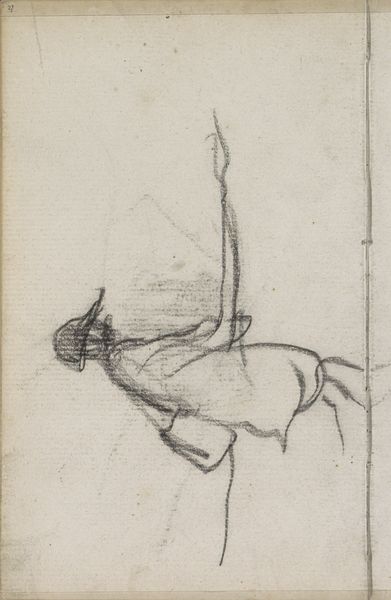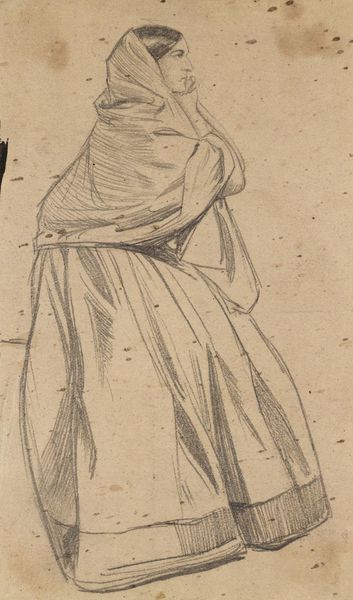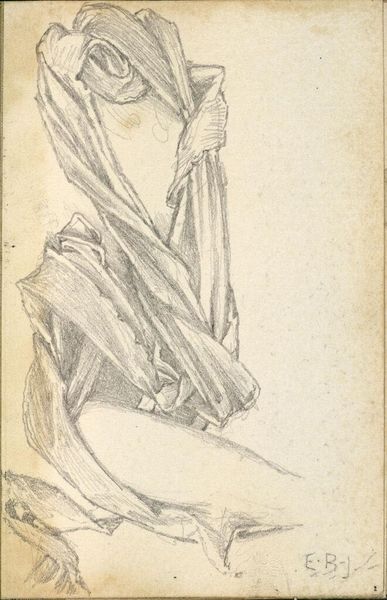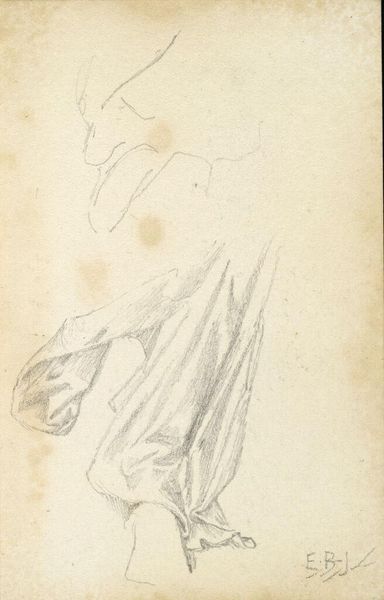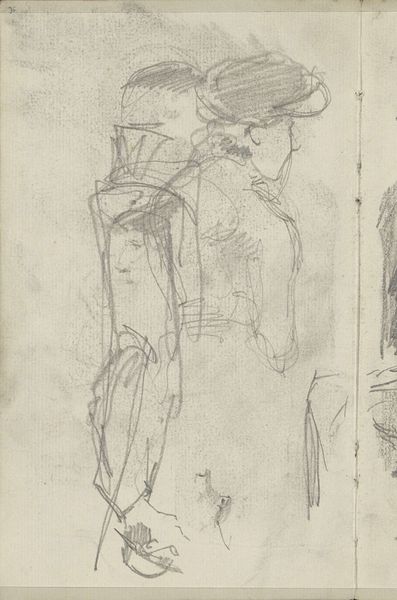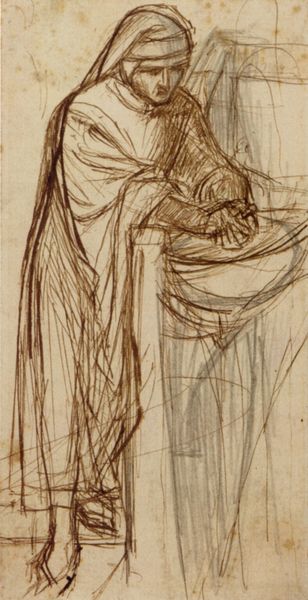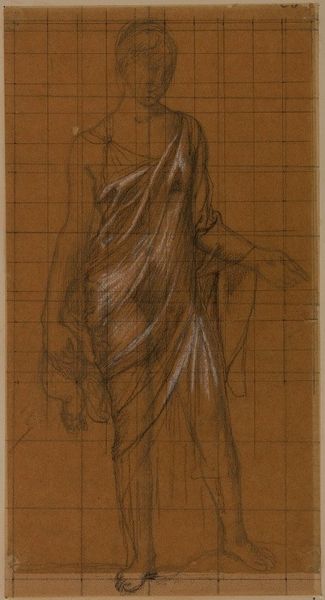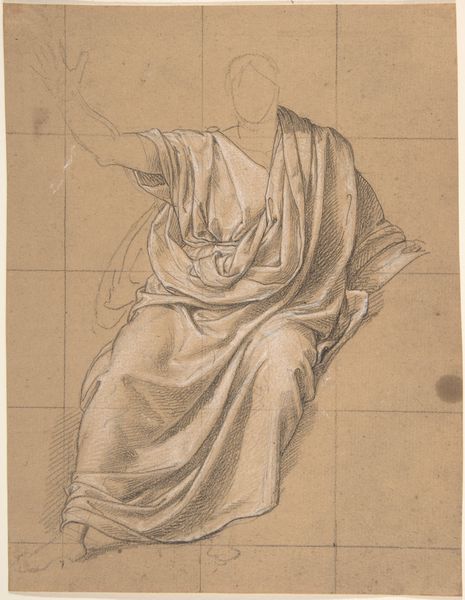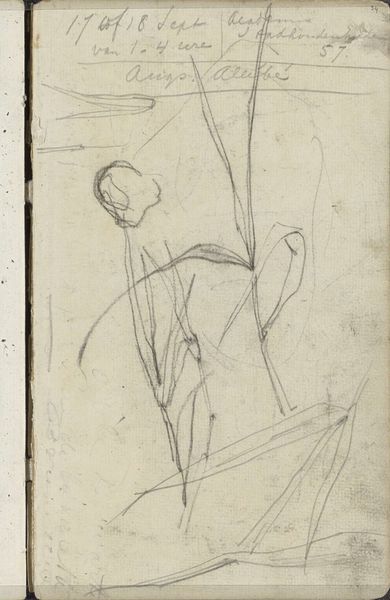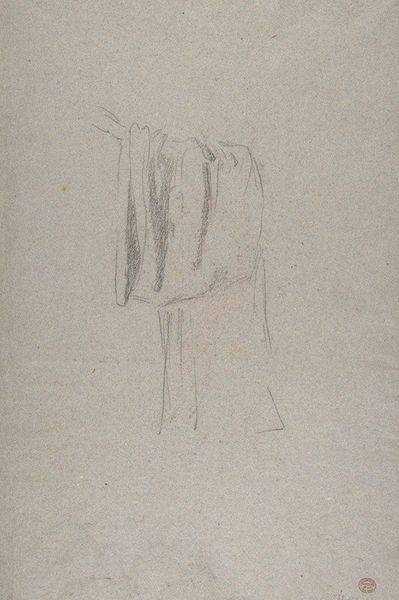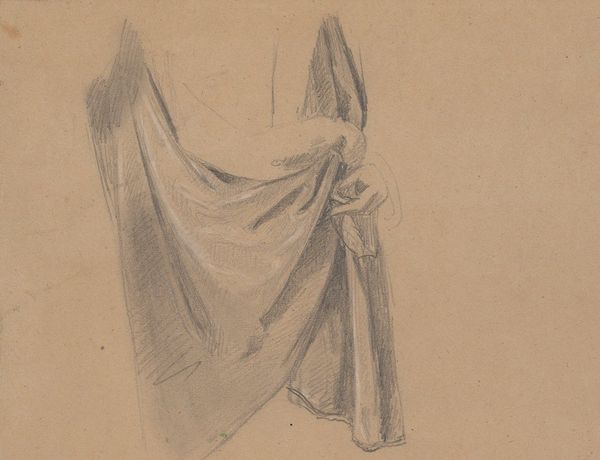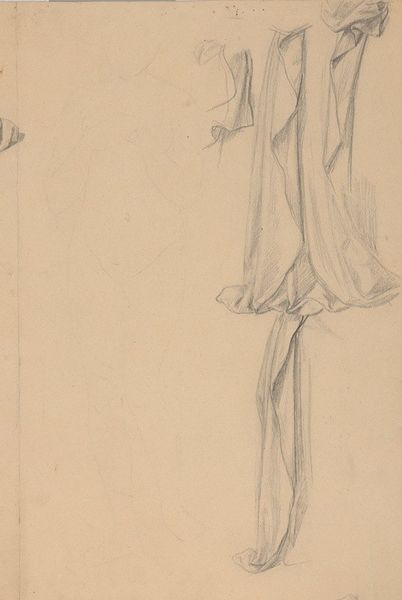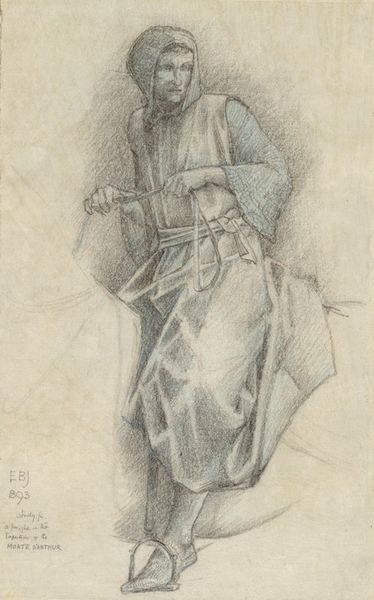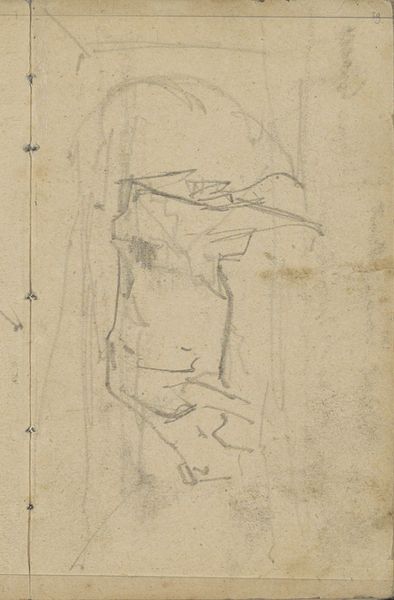
drawing, pencil
#
drawing
#
pencil sketch
#
form
#
pencil
#
academic-art
Copyright: Public Domain: Artvee
Editor: Here we have a work titled "Drapery Study" by Pierre Puvis de Chavannes, likely created sometime in the late 19th century. It appears to be a pencil drawing on paper. I’m struck by the stark simplicity and academic quality of the rendering, as though we’re seeing the underpinnings of a more grandiose idea. How do you approach interpreting a piece like this? Curator: What fascinates me is understanding its place within the artistic ecosystem. It's a drapery study, likely preliminary work for a larger history painting. We must ask, how was academic art trained, disseminated and what purpose did it serve? Think about the art institutions, the salons, the patronage system, and the social function of large-scale, often didactic paintings for which these drapery studies would serve. These institutions powerfully determined whose work mattered, and how artists conceived of their place within this structure. Editor: So the drawing isn't an end in itself, but a step within a larger network? Curator: Precisely. It gives us insight into the meticulous, staged process of academic art creation. Consider the public function served by history painting during that period – reinforcing societal values, mythologizing events and the visual communication of power. How would you see a sketch like this being displayed in the Paris Salon, in context of how these pieces served? Editor: Interesting. I never really thought of a sketch carrying so much baggage, almost a behind-the-scenes glimpse of the institutions upholding academic taste. Curator: And what this suggests is that every mark, every choice reflects a dialogue with these broader cultural forces. Even a "simple" drapery study whispers of artistic power and academic structures. Editor: It changes how I perceive the artistic intention behind this type of piece, recognizing that every component is part of the social construction of the time period. Curator: Absolutely, now you are interpreting from the perspective of historical institutions, great job.
Comments
No comments
Be the first to comment and join the conversation on the ultimate creative platform.
